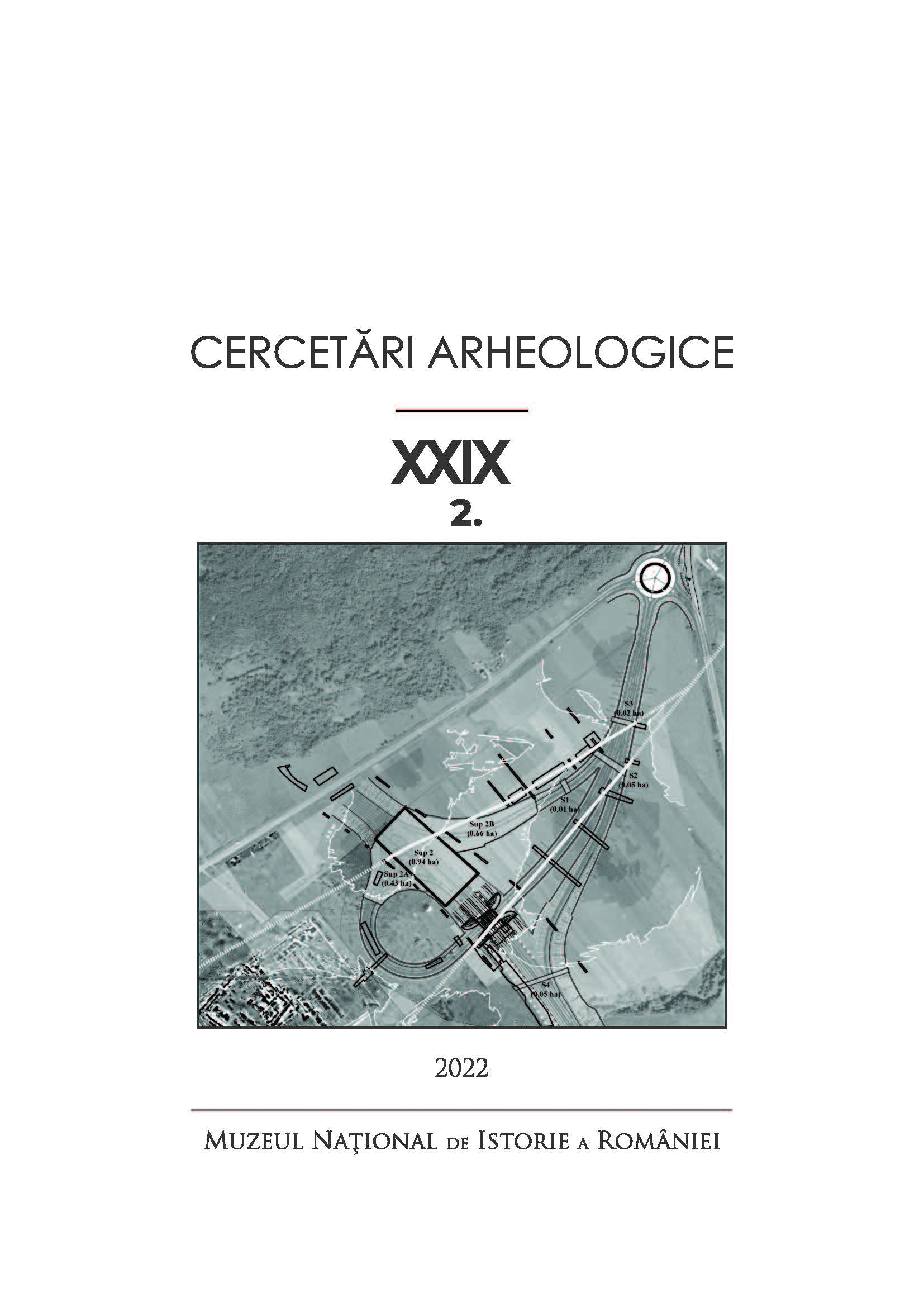Cercetări arheologice preventive la Cetăţeni – „Cetăţuia”, judeţul Argeș (2020)
Rescue archaeological excavations at Cetăţeni – ‘Cetăţuia’, Argeș County (2020)
Author(s): Dragoş Măndescu, Ioan Andi Pițigoi, Ionel-Codruț FloreaSubject(s): History, Archaeology, 13th to 14th Centuries
Published by: MUZEUL NAȚIONAL DE ISTORIE A ROMÂNIEI
Keywords: Cetățeni; Cetățuia Negru Vodă Cloister; rescue archaeology; Late Iron Age; Middle Ages;
Summary/Abstract: This report presents the primary results of the rescue archaeological research carried out in August-September 2020, on the peak of ‘Cetățuia’ hillock, in the precinct of the Cetățuia Negru Vodă Cloister from Valea Cetățuia hamlet, Cetățeni commune, Argeș county, on the proposed emplacement of a future construction with destination of cells, refectory and administrative hall. The area under rescue archaeological excavation is placed at the southern end of the small plateau existent on the peak of the hillock, at over 700 m altitude, on the edge of a slope that descends almost vertically towards Valea Chiliilor. The perimeter was part of the Dacian and medieval fortresses that functioned here during the 2nd c. BC – 1st c. AD, and the 13th-15th centuries, respectively, and was occupied in the last half century by constructions related to the organization of the cloister. Recent times interventions have significantly affected the archaeological heritage. At the beginning of the rescue research, part of the perimeter (the eastern part, about 25m2 ) was already affected by some diggings unattended archaeologically that led to the entire removal of significant portions of older fillings or layers. The total area actually investigated by archaeological excavation was 90 m2 . Due to the rock with a steep slope and the edge of the precipice at the southern extremity of the plateau, the perimeter was not suitable for living neither in the Dacian or medieval eras. That is why, with a few exceptions (five in number), the archeological features were absent. However, the archaeological deposits are still present, being represented by fillings containing materials (household waste – potsherds, small metal parts resulting primarily from constructions – nails, clamps, but also two crossbow bolts, finally a large amount of animal bones) thrown or slipped from the small plateau on the peak, located just north of the researched area, where in the Dacian and medieval eras there was the narrow residential area. Five archeological features were found: three interventions in the bedrock (a terrace, a rectangular hollow and the traces of a possible palisade) whose dating remains uncertain in the absence of a conclusive associated material, an agglomeration of construction materials (sandstone blocks) from the Late Iron Age, as well as parts of a human skeleton reburied in a post-medieval layer.
Journal: Cercetări Arheologice
- Issue Year: XXIX/2022
- Issue No: 2
- Page Range: 485-511
- Page Count: 27
- Language: Romanian

